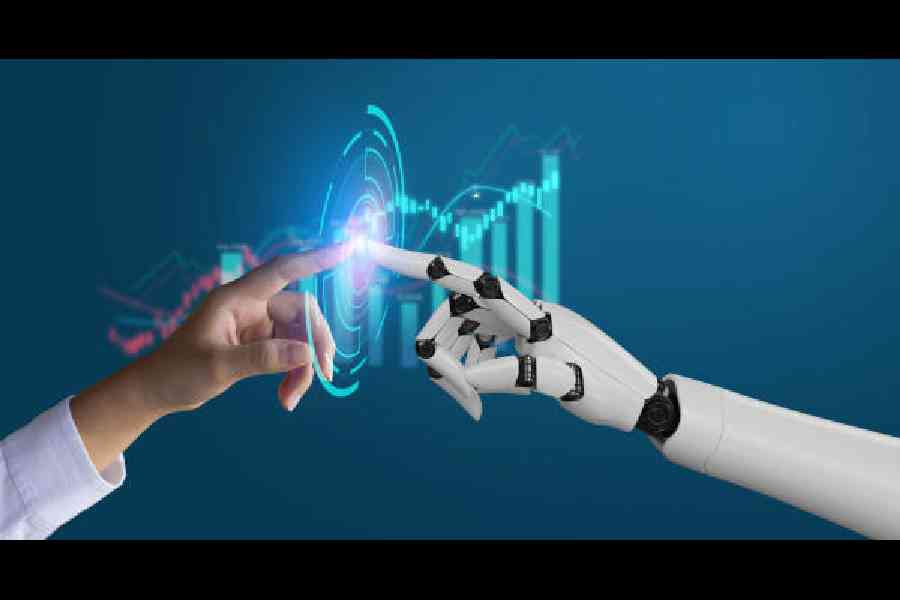Career Choice; AI-AI-O: Song of transition


Yes, artificial intelligence may eat up jobs eventually but for now, it is still creating many. Prasun Chaudhuri speaks to expert Subrata Das about the opportunities. Das is currently an adjunct faculty member at Northeastern University in Boston, US, where he teaches generative AI.
q What are the different career paths in AI across academia, industry, research labs and startups?
They can be broadly divided into three areas: specialised hardware, system software and applications. In each of these areas, research is conducted in universities and research labs, while development for business needs is driven by startups and large companies.
q Can you please elaborate a bit more?
Sure. The distinction between an AI scientist/engineer and a data scientist/engineer is often blurred, as a major part of AI involves processing large datasets in order to extract actionable intelligence. This is also a core function of data scientists. However, it must be noted that AI is a broader discipline. It includes fields such as cognitive psychology, knowledge-based AI and human-computer interaction. In hardware engineering, you may be involved in designing specialised hardware to meet the high processing demands of AI, especially in machine learning, by enabling efficient parallel computation and optimised data handling.
q What about roles in software and applications?
These focus on designing and developing software that runs efficiently on such hardware, handling operations such as matrix multiplication and vector or tensor computations. Roles in the development of generic functional software such as cloud services, specialised databases like vector and graph databases, large language models (LLMs) and agentic platforms are also in demand. The last is a system that empowers intelligent agents to operate autonomously. Finally, applications are developed for finance, healthcare, e-commerce, travel and defence, to name a few sectors. Solving a business problem often involves applied research. An AI or a data scientist in an industrial setting may not always write production software but is responsible for identifying suitable algorithms and developing proof-of-concept models. AI engineers then focus on their development and deployment. Today’s AI and data scientists are expected to be hands-on — developing software while also conceptualising solutions.
Two strong trends have been the development of a wide array of applications using LLMs and the creation of AI agent-based applications capable of communicating and coordinating with other agents in their environment.
q What are the core skills required of anyone working in this field?
A solid foundation in mathematics and statistics is essential, including calculus, linear algebra, probability theory — especially Bayesian — and algorithm fundamentals. Familiarity with traditional machine learning algorithms and tools is also crucial. There are about 10 core machine/deep learning algorithms every data scientist should know — linear/logistic regression, decision trees/random forests, k-nearest neighbours, neural networks and deep learning models, support vector machines, k-means clustering, Naïve Bayes classifiers, XGBoost, light GBM, reinforcement learning and some architecture such as transformer, autoencoders, generative models and convolutional neural network.
q What about programming languages and other tools?

Python is the predominant programming language, along with libraries such as NumPy, Pandas, Scikit-learn and Keras/TensorFlow/PyTorch. Knowledge of NLP algorithms and large language models is also essential. Specialised libraries for image processing and reinforcement learning are valuable as well.
q Do you have any advice for freshers preparing for AI job applications?
I would say ensure your resume highlights your skills and projects, create a GitHub repository and a LinkedIn profile, research the concerned company’s AI work, review potential interview questions on algorithms and familiarise yourself with topics such as supervised versus unsupervised learning, overfitting, bias-variance tradeoff and evaluation metrics. Also, prepare a few questions you can ask the interviewers.
To stand out, showcase real projects and accomplishments, publish and share blogs, contribute to open-source projects, establish a visible tech stack, participate in competitions, network through LinkedIn and conferences, and develop strong communication skills.
q Can you transition to AI from another field?
It is increasingly common. Students with a background in mathematics, statistics or physics start by learning AI fundamentals, machine and deep learning algorithms and associated tools. Build a portfolio of projects involving predictive analytics. For those from fields such as biology, chemistry, marketing, finance or engineering, it’s important to learn AI fundamentals while leveraging domain expertise to apply AI effectively in that area.